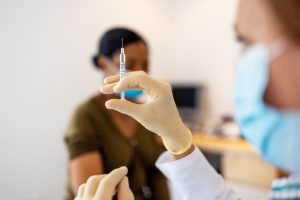Patient Safety Resources
Patient Safety requires a consistent and intense focus by all members of the healthcare team. Explore this section to learn more about assessing, developing, maintaining, and evaluating Patient Safety programs within any healthcare environment. Patient Safety is even more of a focus during pandemics when the risk can be increased due to changes in healthcare services such as screening or mass vaccinations.
Institute for Healthcare Improvement
The Institute for Healthcare Improvement is the premier global organization focused on Patient Safety and provides a wide variety of education and certificate programs to advance patient safety in both healthcare professionals and also healthcare systems.
FEMA
The Federal Emergency Management Agency (FEMA) is the federal agency charged with emergency management for the United States. FEMA also plays a pivotal role in providing relief for healthcare facilities during times of declared regional and national disasters. FEMA is also responsible for the federal pandemic preparedness push packs which contain vital emergency surge patient care supplies for healthcare facilities to maintain continuity of care such as Personal Protective Equipment, medications, and other lifesaving medical supplies.
may not always be possible, but proper design for the healthcare system can help with
dramatically improving patient safety. Activities such as simulations can also be useful
tools in this quest for optimizing the design of healthcare facilities and clinical care
spaces.
Centers for Disease Control and Prevention
The Centers for Disease Control and Prevention is a federal agency responsible for developing evidence-based guidance and guidelines to improve Patient Safety and reduce adverse events in healthcare settings. The following tools and resources address the most common sources of patient safety risk and are applicable in both pandemic and non-pandemic scenarios. During pandemics, the importance of vaccine administration is even more critical due to the mass nature of these types of initiatives. CDC also tracks core patient safety measures through its National Healthcare Safety Network (NHSN) and uses this data to provide tools, resources, and other clinical support to healthcare facilities designed to advance patient safety initiatives across the entire healthcare continuum of care.

















